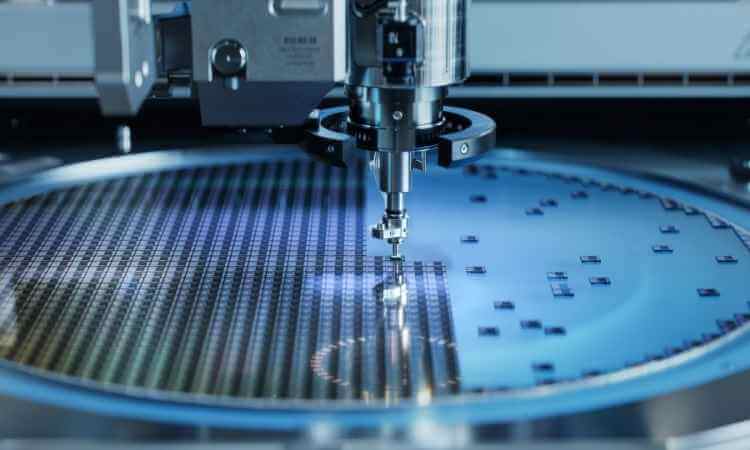Semiconductor Sustainability: Predictions for 2025
The semiconductor industry, a cornerstone of modern technology, is rapidly evolving. As we push the boundaries of innovation, it's crucial to consider the environmental impact of these advancements.
A team of TechInsights’ best engineers, analysts, and sustainability experts joined forces to determine the most pressing topics and future view of issues facing the semiconductor ecosystem. The work is grounded using data from EcoInsights – a suite of sustainability data tools that provide cradle-to-gate carbon emissions insights through to 2035.
The inaugural TechInsights Semiconductor Sustainability Predictions - 2025 are:
Prediction #1
Carbon emissions from semiconductor manufacturing will grow at a rate of 8.3% through 2030 to 277 million metric tons of CO2e.
TechInsights predicts that semiconductor emissions will continue to rise significantly in the coming years. By 2030, emissions from semiconductor manufacturing are expected to reach a staggering 277 million metric tons of CO2e, a substantial increase from the 168 million metric tons recorded in 2020. This alarming growth rate, fueled by increasing demand for advanced technologies like AI and 5G, underscores the urgent need for sustainable solutions.
Prediction #2
Silicon intensity will continue to dominate the emission impact of semiconductor manufacturing in 2025 and beyond - representing at least 90% of carbon emissions.
Advanced packaging technologies like 3D stacking and chiplet integration have revolutionized the semiconductor industry by enabling more die in a chip. In 2025, silicon intensity, the amount of fabricated die required to produce a given level of computing performance, is expected to continue to dominate the environmental footprint of semiconductor manufacturing.
While advanced packaging technologies can improve the energy efficiency of individual devices, their overall impact on semiconductor emissions is relatively limited. In most cases, packaging contributes less than 10% to the total product carbon footprint of a semiconductor. However, for specific applications like automotive and connectivity, the impact of packaging can be more significant.
As the industry continues to push the boundaries of performance and efficiency, it is crucial to strike a balance between technological innovation and environmental sustainability. By optimizing design, manufacturing processes, and materials usage, semiconductor manufacturers can reduce their carbon footprint and contribute to a more sustainable future.
Prediction #3
In 2025, one of the top mobile phone makers will deliver a flagship “hero” device with 50% lower carbon emissions than the competition.
The smartphone industry is poised to take a significant step towards sustainability. One of the top mobile phone manufacturers is expected to launch a flagship device in 2025 that boasts a 50% lower product carbon footprint compared to its competitors.
This groundbreaking move is driven by increasing consumer awareness of environmental issues and growing regulatory pressure on tech companies to reduce their carbon emissions. As consumers become more conscious of the environmental impact of their purchases, they are increasingly seeking out products that are both innovative and sustainable.
To achieve this ambitious goal, manufacturers will need to adopt a holistic approach that considers the entire product lifecycle, from raw material sourcing to end-of-life disposal
Prediction #4
By 2030, there will be a 16x increase in CO2e emissions from GPU-based AI accelerators.
In 2025, the semiconductor industry is poised to accelerate its sustainability efforts. Driven by increasing regulatory pressure, investor demand, and customer expectations, at least three of the top 25 semiconductor companies will announce more ambitious net-zero targets.
This shift towards sustainability is being driven by several factors, including regulatory pressure, investor demand, customer expectations, and supply-chains adopting sustainable practices.
Prediction #5
By the end of 2025, three of the Top 25 semiconductor companies will announce acceleration in their net zero targets.
The rapid advancement of artificial intelligence (AI) is driving significant demand for high-performance GPUs. However, this technological surge comes with a substantial environmental cost. By 2030, the carbon emissions associated with the production of GPU-based AI accelerators are projected to skyrocket by a staggering 16 times.
Several factors contribute to this alarming trend:
- Massive Silicon Demand: AI accelerators require large, complex chips that push the limits of silicon technology.
- Energy-Intensive Manufacturing Processes: The fabrication of these chips involves energy-intensive processes like lithography and etching, further contributing to the overall product carbon footprint.
- Complex Packaging: Advanced packaging techniques, such as 3D stacking and chiplet integration, while improving performance, also increase the complexity and energy consumption of the manufacturing process.
Read the full Semiconductor Sustainability Predictions – 2025 report for more detail, data, and analysis on where TechInsights sees the industry headed.












